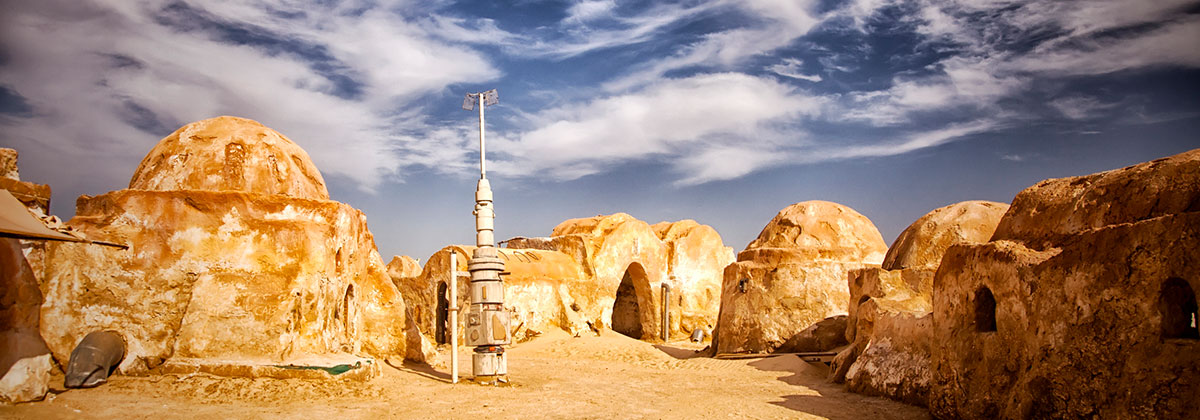George Lucas’ original “Star Wars” (later re-titled “Chapter IV – A New Hope”) cost around $11 million to make in 1977, or about $40 million in 2016 dollars. According to one estimate, total Star Wars earnings from theatrical and DVD movie releases, books, toys, video games and the like are at $30 billion and climbing. That’s higher than the 2015 gross domestic product of about half the world’s countries. Talk about a nice return on an investment! It helps explain why in 2012 Disney Entertainment was willing to part with a cool $4 billion to acquire Lucasfilm.
Although 21st century movie technology can produce images only dreamed of in 1977, many of the fantastic creations introduced in the original movie also reappear in sequels. Perhaps the most enduring and iconic is a Jedi’s weapon of choice, the lightsaber. Who hasn’t dreamed of vanquishing an Empire foot soldier with a blow from one of these mythical “blades?”
Michael Brown became aware of “saber mania” after a 2005 Halloween performance by his impromptu “NY Jedi” lightsaber brigade spawned dozens of inquiries from aspiring Jedi. Thus was born the Lightsaber Academy, where certified (really!) instructors teach various forms of saber combat, along with the discipline’s eight “Core Principles.”
Just good, clean (albeit nerdy and presumably somewhat profitable) fun for Star Wars fans of all ages, right? That’s how George Lucas might have seen it. The Star Wars creator was known for tolerating and on occasion even encouraging unauthorized “SW” inspired enterprises.
Just how different things are now that Lucasfilm is part of the Disney entertainment empire became apparent in mid-October when Disney filed suit against Brown in California federal court. Disney’s complaint alleges infringement of the Lucasfilm trademarks “LIGHTSABER” and “JEDI.” The marks’ respective registrations cover a long list of uses, including entertainment services, action figures, puzzles and other toys. The complaint also alleges trademark dilution, false designation of origin, cybersquatting and violation of California’s Unfair Business Practices Act. Noting that Brown allegedly ignored numerous cease and desist demands, Disney seeks an injunction, along with actual or statutory damages.
Has “Lightsaber” “Gone Generic”?
We regularly counsel clients regarding the risk of losing trademark protection through so-called “genericization”. It is a fundamental tenet of trademark law that no trademark rights can be claimed in a “generic” term, such as “hamburger”. But what if a product’s original, unique name becomes synonymous with the product itself?
While this is likely a sign of great commercial success, it can result in the loss of trademark protection, even if the mark has become incontestable. Once protection is lost, of course, anyone can use the term for the “genericized” product. Examples of this phenomenon include everyday items such as “escalator” and “linoleum.” Has “lightsaber” suffered the same fate? We think a case might be made. This issue becomes especially pertinent in light of the burgeoning VR and AR technologies and industries. If you are in VR and you reach for a sword with a lased optical cutting element attached, can you not call it a “Lightsaber?” (Yes, my nerdiness is apparent!)
Of course, escalators and linoleum are actual, tangible products. In contrast, like many of Disney’s best known properties (including that well-known mouse) a lightsaber as an actual weapon is of course still somewhat fictional. As a toy, though, it’s both very real and very common. A current Google search of “lightsaber toy” returns nearly 700,000 hits, only a small percentage of which appear to relate to Disney-licensed playthings. Even the self-proclaimed “Official Star Wars Website” (www.starwars.com) notes that a “massive arsenal” of toy sabers of various sizes and styles have been released since the 1978 appearance of the first known commercially-produced model.
Coexistence of Identical Marks
Proof of a likelihood of confusion is essential in most trademark infringement suits. But similarity between marks alone is not sufficient. Unless and until a trademark becomes so well-known that its owner becomes the de facto presumed source of virtually any product bearing that name, i.e. it’s considered famous, similar (or even identical) marks can typically coexist, provided they are associated with sufficiently dissimilar goods or services. Thus, for example, valid registrations of “Bounty” by different owners exist for paper towels, instructional books and rum.
Even if “Lightsaber” hasn’t become a generic term, the different settings and contexts in which it is used by Disney and Brown appear likely to influence the likelihood of confusion determination.
Has The Empire Gone Too Far?
Disney’s aggressive approach is not surprising – the entertainment giant is among a number of major global enterprises (whose ranks also include Coca-Cola and McDonalds) well-known for zealous protection of their trademarks, even against very small businesses. Time will tell, of course, but we can’t help wondering whether in this instance Disney may have overreached, and become the Galactic Empire instead of the Magic Kingdom. Whatever its outcome, this case presents a number of interesting issues, and Sherman IP’s attorneys will be following it closely.

